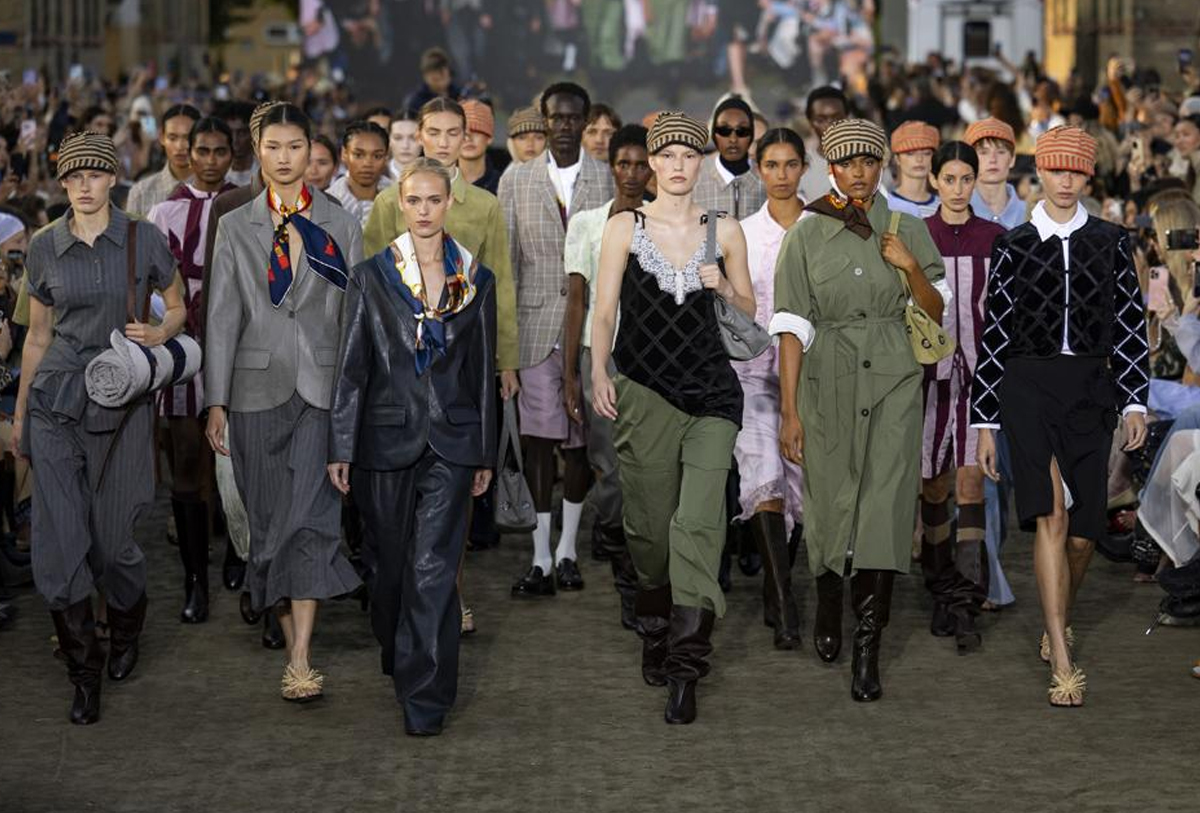
Once hailed as the most sustainable fashion week in the world, the Danish capital’s flagship fashion event, Copenhagen Fashion Week is now facing serious systemic challenges; the ones that not only threaten to erode its credibility but future too.
At the center of the crisis lies the same framework that helped put Copenhagen above the rest. Launched in 2020, the CPHFW set stipulating sustainability standards with 19 compulsory requirements: 1) ethically-produced; 2) reduced waste; 3) No exclusion of product destruction. On paper it was revolutionary. However, recent complaints have revealed great gaps in the application of these standards.
Earlier this year, the Danish Consumer Ombudsman received a formal complaint brought forward by the advisory firm Continual. The issue? Alleged greenwashing by brands that were supported by Copenhagen Fashion Week.
Critics blame this on lax enforcement and too much self-reporting. “The Copenhagen Fashion Week has promoted these brands as sustainable,” said Tanja Gotthardsen, Danish anti-greenwashing expert. “That’s simply not legal under Danish consumer law. It’s misleading not just to consumers but to the industry itself. I found numerous examples admitted by the CPHFW brands, like Stine Goya, by producing mostly plastic clothing while claiming to ‘dream of a fossil free world.’ Baum und Pferdgarten promised to phase out virgin plastics by 2025, yet their webshop was still full of them.”
Gotthardsen also criticized the framework by noting that it doesn’t focus on key areas such as the production volumes and the garment longevity. “Leadership has been alerted to these issues repeatedly, but they remain unaddressed,” she added.
Responding to the allegations, Copenhagen Fashion Week CEO Cecilie Thorsmark stated: “A complaint has been filed, which is not uncommon. As such, we are not re-evaluating any procedures at this stage and do not anticipate the need to do so.”
Beyond sustainability, Copenhagen Fashion Week is facing another mounting concern: talent retention.
In recent years, the event has worked to elevate internationally pertinent brands such as Ganni, Cecilie Bahnsen and Heliot Emil. However, most of these brands exit the local arena as they grow. Ganni made its runway debut at Paris, whereas Cecilie Bahnsen is gaining a foothold in Paris. Heliot Emil, furthermore focuses on commercial efforts around Paris Fashion Week.
Felix von Bahder, co-founder of Deadwood, was direct: “If the Copenhagen Fashion Week really wants to support that kind of thinking, it needs to be more than a stage, it has to be a system. That means ongoing partnerships, sales channels that work, and space for collaboration.”
Although Copenhagen Fashion Week attracts a lot of social media attention, a number of insiders suspect that its commercial potential is declining. Influencers and street-style have taken over the event. Whereas buyers and editors who drive the business are finding less value.
“The presence of international guests ends at a headline or an Instagram post,” said von Bahder. “If that energy doesn’t turn into something structural, orders, resources, introductions, it’s a nice night out, nothing more.”
Some cite logistical clashes. The parallel running of the Copenhagen International Fashion Fair (CIFF) places local brands in a difficult position, forcing them to choose between managing runway shows and engaging with retailers. This weakens business opportunities, particularly of smaller brands that do not have huge teams.
One buyer observed that many showrooms were “staffed with interns or ‘random people’ barely knowledgeable about the brands because the entire team is offsite working on a fashion show.”
To its credit, Copenhagen Fashion Week has built global visibility for Danish fashion. Its sustainability framework has inspired other cities, including London, Berlin, and Amsterdam. But visibility is not enough.
As Gotthardsen warned: “Without enforcement that is proportional to the scale of the problem, production overcapacity, unpaid living wages, misleading marketing, these so-called ‘requirements’ are little more than PR exercises. And because other fashion platforms are adopting Copenhagen’s framework wholesale, we are not just failing locally, we are exporting these weaknesses across Europe and beyond.”
She added: “I believe it to be incredibly culturally insensitive to promote Copenhagen as a sustainability leader, when globally we see platforms and communities that are much stronger in promoting moderation, heritage and craft, like Bhutan Fashion Week or Dakar Fashion Week in Senegal.”
For now, Copenhagen Fashion Week stands at a crossroads. Its reputation as a sustainability pioneer is under threat, and its role as a talent incubator risks becoming unsustainable. Without deeper structural reform, greater transparency, and a rebalancing of its priorities, the future of Scandinavia’s fashion crown jewel may rest more on its past promises than its present performance.
Share this article: